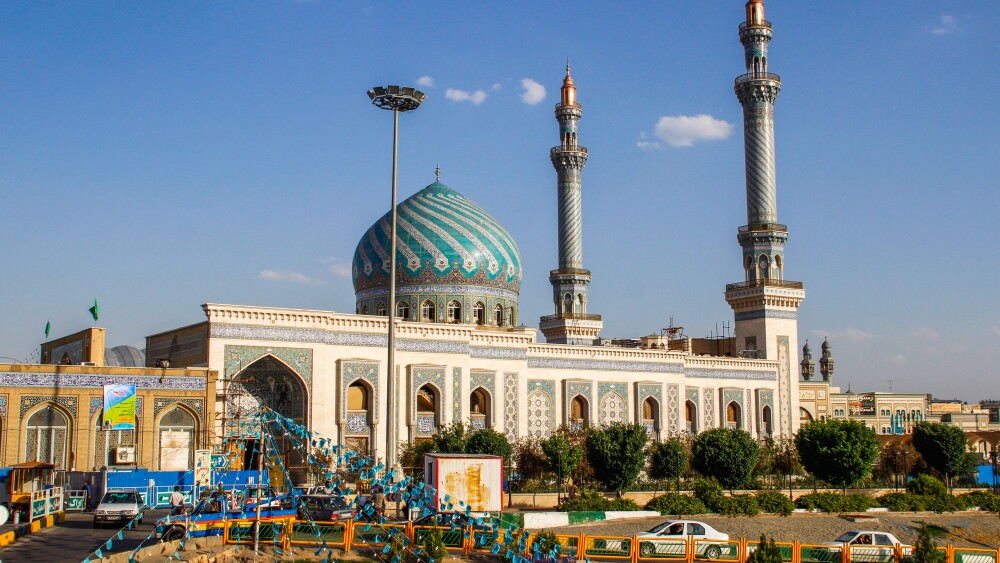President Donald Trump announced on June 21, 2025, that the United States had bombed three Iranian nuclear sites: Fordow, Natanz, and Isfahan. The president was wise to time the attack when he did, given that the Shi’ite holy month of Muharram starts on June 26. It marks a time of great religious passion, which the Islamic Republic is sure to exploit.
Ayatollah Ruhollah Khomeini once said, “It is Muharram and Safar that has kept Islam alive.” Muharram and Safar are the first two months of the Arabic calendar. In Iran, the regime uses both months to mourn religious figures and to shore up religious fervor and celebrate martyrdom.
In Iran, the regime uses [the first two months of the Arabic calendar] to mourn religious figures and to shore up religious fervor and celebrate martyrdom.
Shi’ites trace the Islamic divide with Sunnis to Muhammad’s immediate succession. They believe that Muhammad chose his cousin and son-in-law Ali as his successor, and that the caliphate must be hereditary through Ali’s line. But those who became the Sunnis chose Abu Bakr, another associate of Muhammad, to be caliph. This injustice was mitigated by the fact that Ali eventually became the caliph. His eldest son Hassan succeeded him but abdicated within months.
Hassan’s brother Husayn claimed the caliphate, causing the Second Fitna [discord] of early Islam. This culminated in the Battle of Karbala on the tenth of Muharram. Umayyad forces loyal to the Caliph Yazid destroyed Husayn’s weaker army, killing Husayn.
The Islamic Republic uses this historical narrative—with many inaccuracies—to glorify resistance and martyrdom. Commemorating events begin on the first of Muharram every year (even though Husayn only arrived in Karbala on the second). They peak on the ninth of Muharram and then ‘Ashura, on the tenth of Muharram, which this year falls on July 5-6. Street theaters relive the events, telling tales of the caliphate forces’ cruelty and brutality and of Husayn and his entourage’s resistance, courage, and sacrifice.
Iranians drape cities in black, but streets become crowded, especially in the evenings. Performative mourning takes place for the ten days. From television to schools, the state mobilizes resources to encourage these processions.
Nazri is a pledge to God that, in exchange for granting a wish, people would distribute food to commoners on a religious holiday. On the ninth of Muharram and on ‘Ashura, people line up to receive nazri. Even the low-voltage believers find their piety. Many women who are usually unobservant of hijab begin wearing it properly, and many drinkers avoid alcohol for the two months of mourning. The state also dials up its crackdown on un-Islamic behavior.
After the ten days, cities and schools remain mostly covered in black, and the official mourning period continues, but the public performative aspects of it go down, until Arba’in, meaning the fortieth. In Islam, the fortieth day of death marks the end of the mourning period. Arab’in happens on Safar 20 [August 14-15 this year], when cities return to mourning. This continues until Safar 28, the anniversary of Muhammad’s death, marking the end of the Muharram and Safar.
Khomeini’s comment is telling: What kept his version of Islam alive was death and mourning, not victory. This year, it will be even more special with another lost war for the Shi’ites.
What kept [Khomeini’s] version of Islam alive was death and mourning, not victory.
During the Green Movement in 2009, public demonstrators organized protests on ‘Ashura, falsely believing that the religious holiday gave them immunity. It turned out to be the bloodiest day of the movement, with dozens killed and 1,400 arrested.
Without external pressure anymore, and wounded, the Islamic Republic will use the occasion to prove that it is still in charge. Relying on its foot soldiers’ mourning enthusiasm, it will unleash them on the people to brutally enforce order and arrest people who showed sympathy for Israel. Its propaganda apparatus will focus on suffering and survival, linking the war to the survival of Shi’ism after Muharram. Rather than having to accept responsibility for the disaster he has wrought, Supreme Leader Ali Khamenei will equate himself to Husayn, the greatest Shi’ite martyr.
Timing matters not just in terms of strikes and tactics, but also culture. Iranians may pour out to protest the regime once the war is over. To give them the best chance, the United States and Israel should end the war after the peak of the mourning period on July 6 and before Arba’in on August 14, when zealotry will peak again.







